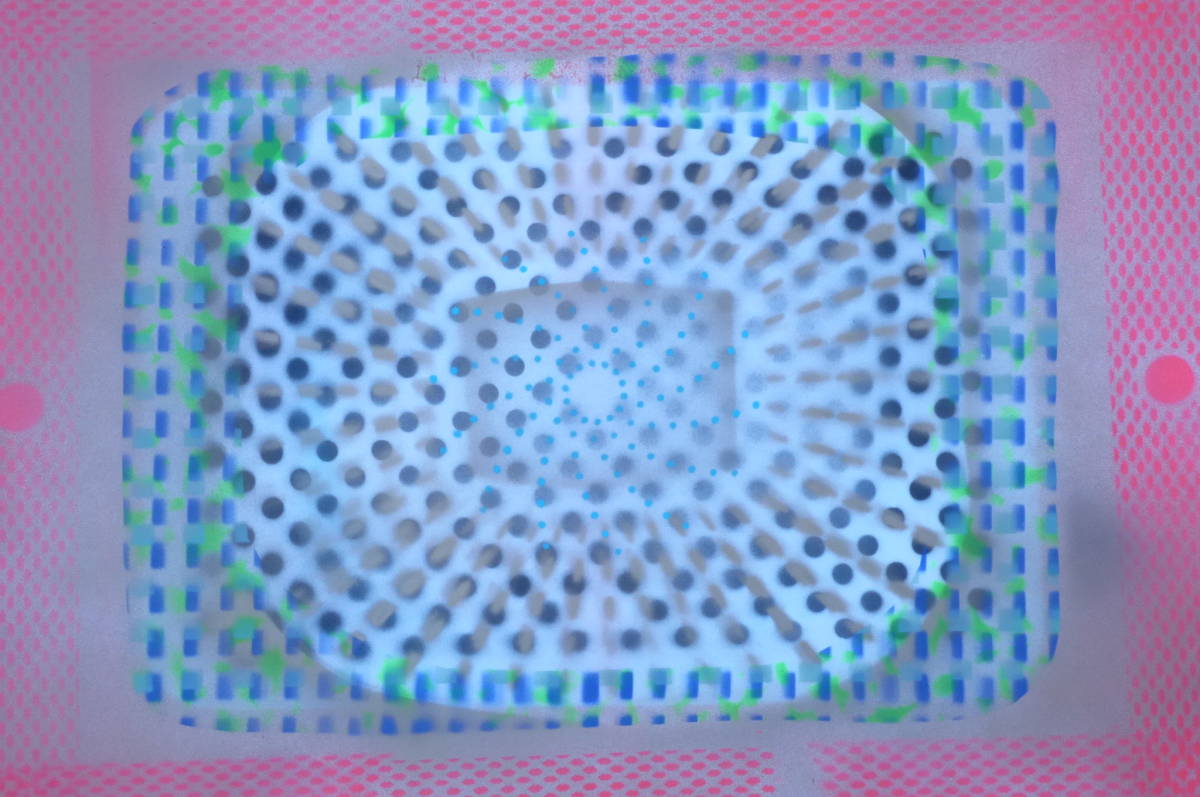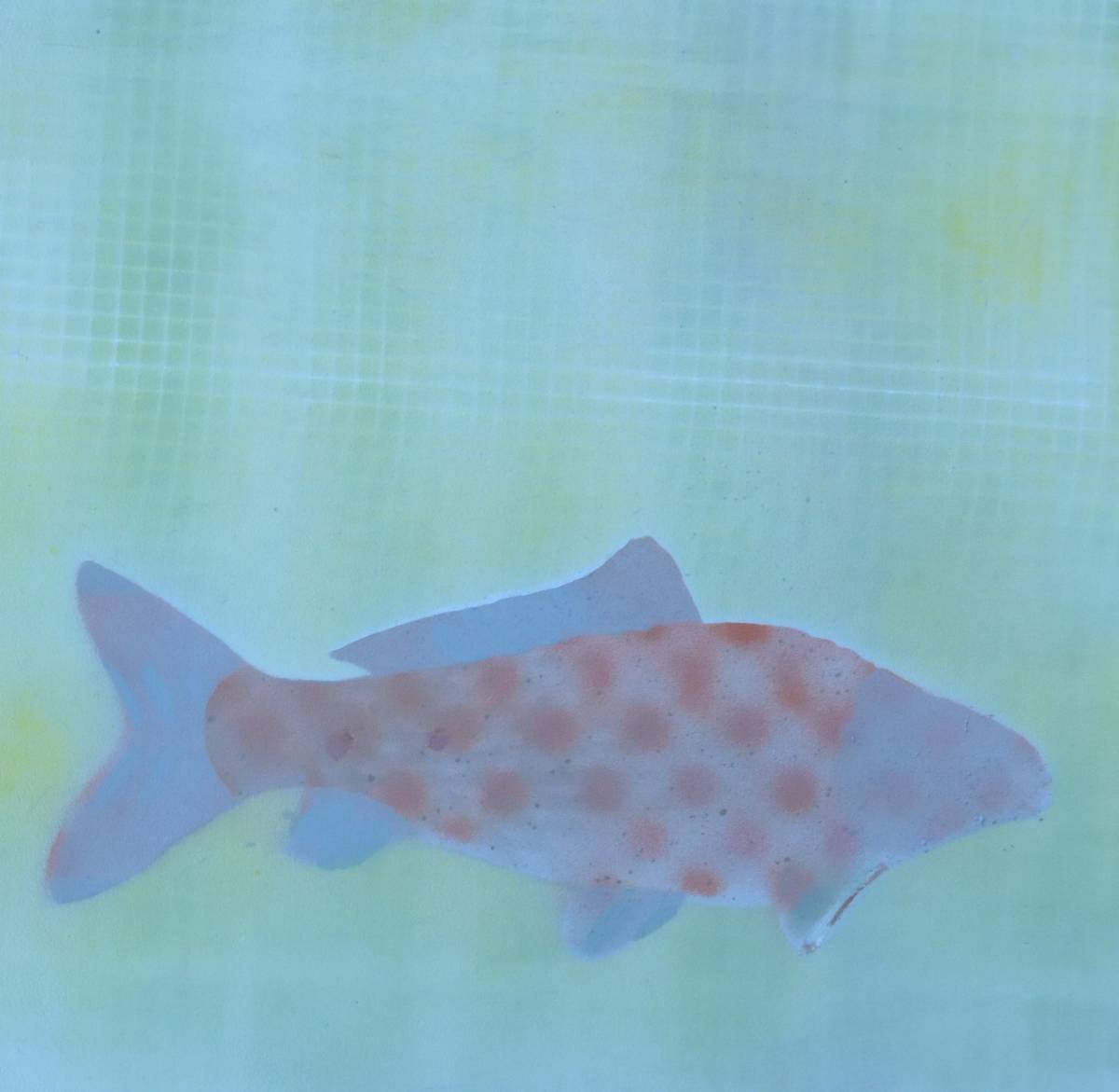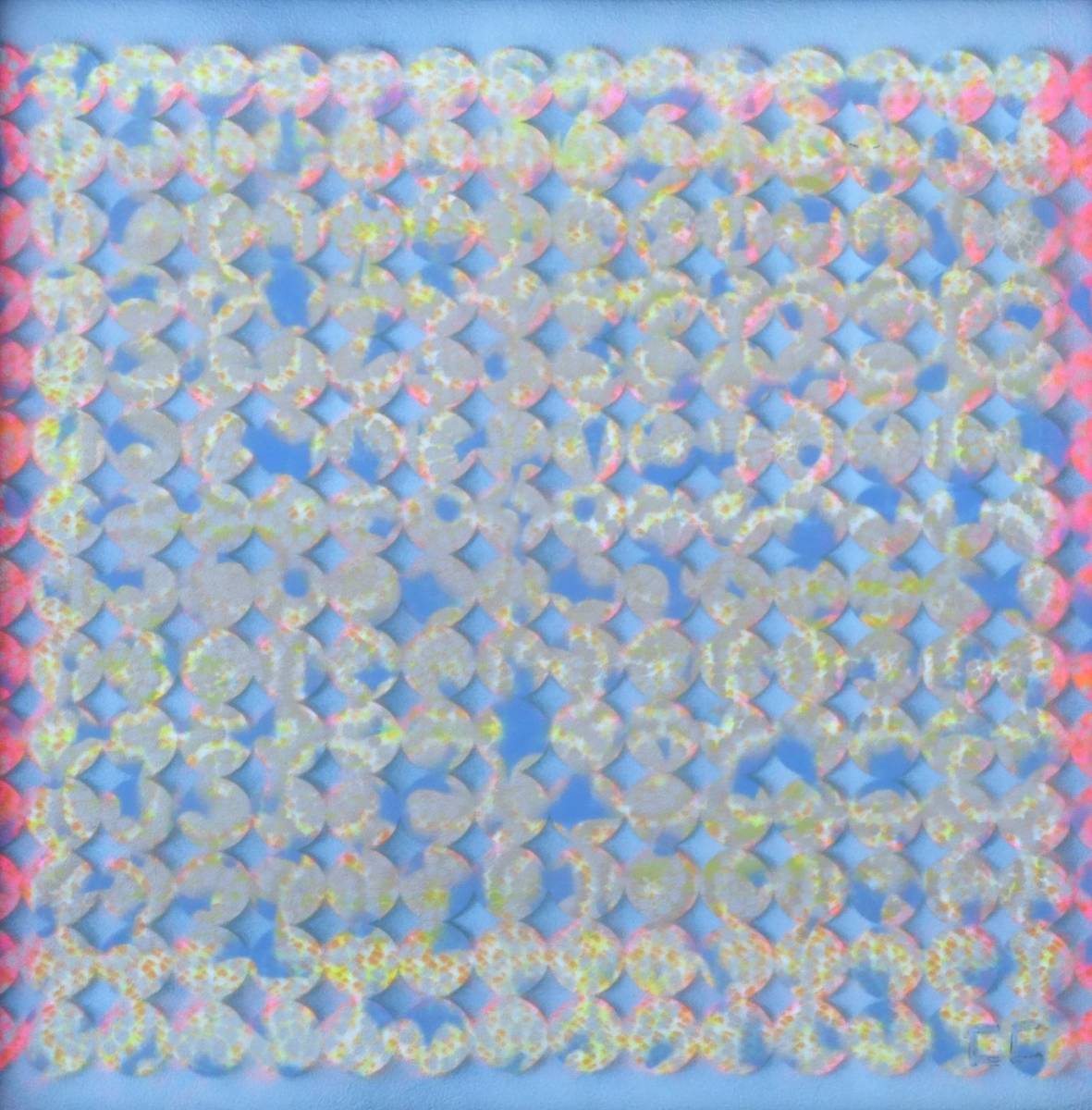
A unique, do-it-yourself visionary artist, Chip Chapman now paints at his “laboratory” in Hurricane. “May Cause Dizziness” is his first solo exhibition and features works exclusively created in 2015. Chapman presents a wide range of his painted works from 2015. A reception will be held at the exhibit on Friday, Dec. 4 from 5 p.m. to 6:30 p.m. at the Canyon Community Center in Springdale.
Using re-purposed items as stencils, Chapman creates images that are both familiar and mysterious, playful and thought-provoking. Composition and color are major variables in pieces that range from flat and minimalist to bright, energetic, and multi-dimensional.
Chapman set some time aside to discuss his exhibit in an interview with The Independent.
The Independent: When did you move to Utah?
Chip Chapman: My wife Susan and I moved to Hurricane five years ago and got busy making art and serving on the Zion Canyon Arts Council, known widely as Z-Arts. Z-Arts is the oldest rural arts organization in Utah and a sponsor of my show along with the Town of Springdale, with support from the Utah Department of Arts and Museums.
Indy: Have you been active in the art scene here?
CC: We both took plein air painting classes from J. Brad Holt and went on many paint-outs with “The Kolob Society”. Most days find us working side-by-side: She’s making jewelry that is available at Split Rock Gallery in St. George and Artisan’s Gallery in Cedar City while I’m painting or roaming the internet.
Indy: Is this your first exhibit?
CC: In 2015, I participated in the “One X One” exhibition at DSC in St. George, the Annual Juried show at the CCC in Springdale, the Washington County Fair Fine Arts exhibition in Hurricane and the “Exploring Human Origins” exhibit in Cedar City. I also rode my 1949 John Deere Model A in three Hurricane City parades.
Indy: Does your exhibit really cause dizziness?
CC: The title for my first solo show was inspired by a quote about abstract art by Dian Parker: “The emotion in the art synergizes with the evoked emotion of the viewer and voilá, you love the work, hate it, or remain cold. When viewing the work, you may feel dreamy, or hyper tense, float with a buttery pattern, or grow dizzy in a geometric structure.”

Indy: So how exactly does this aesthetic translate in terms of your personal approach?
CC: Starting with kitchen sink mats I purchased at the local Ace Hardware, I began exploring how the patterns created by these re-purposed stencils could be combined in an artistic way. I continued to collect objects to be used as stencils, from the DI store in Cedar, the Merc in Hurricane, and even out of a dumpster in Richfield. I found things on eBay, and as I began sharing some of my paintings on Facebook, friends started giving strange industrial meshes and perforated aluminum to explore.
Indy: Is “May Cause Dizziness” feature solely abstract art?
CC: My show contains a couple of more traditionally painted subjects, a couple of mixed-media assemblages, and many purely stencil works. These stencil pieces are grouped as naturally inspired (a series of koi works, bees, fossils), spiritually inspired mandalas, and manmade notions of complex systems. I’ve included some apt quotes from artists, physicists, politicians, and humorists to complement the subjects. I want the viewer to explore each piece for themselves, feel it, and let it have a conversation with them.
Indy: You must have had an interesting youth and education.
CC: In the early 1970s, I studied music composition under Morton Subotnick and Harold Budd at CalArts. CalArts was an amazing, immersive arts environment in those days. I worked with painters, printmakers, animators and musicians of many styles and cultures.
Indy: Oh, wow. CalArts is like the Berklee School of Music’s weird hippie uncle. Having studied with Morton Subotnick says it all. Did you pursue music before getting into the visual arts?
CC: I was a founding member of the Los Angeles Free Music Society and produced a series of record albums, live performances, and film soundtracks. One would go on to win the Student Academy Award for best experimental film. We made our own music with home-built instruments, re-purposed tools, and children’s toys and with electric instruments including the large Buchla Electric Music Box systems. A reunion concert in 2011 was sponsored by and performed at The Getty Center in Los Angeles.
Indy: I’d imagine that yielded some interesting stories.
CC: My friend and bandmate Joe Potts won a blue ribbon in the Los Angeles Open Exposition which led to an invitation from the rental gallery at the Los Angeles County Museum of Art to participate in a group show at LACMA. Joe’s main artwork at the time involved gruesome autopsy photos (he had a solo show in Tokyo, Japan of this work). But the work he won the blue ribbon for was exhibited under the name Xie Kitchen. Joe asked me to be the front, to play the artist Xie Kitchen. With Joe as my ‘studio assistant’ we delivered his works to LACMA. Somehow I was able to keep up the pretense for an entire summer, during which we sold and delivered many paintings to collectors in Santa Monica, Beverly Hills and The Valley. We received a wonderful thank you on fine engraved stationary from a City Councilman in Beverly Hills concerning the work that he proudly displayed in his official office. While my role as Xie was a bit of a misrepresentation, the artwork Joe created was not. His beautiful canvases of undulating chevron patterns (which he created using stencils) were all well-executed and delightful. It is the memory of that experience and ongoing appreciation of these works that led me back to the rich possibilities of stencils forty years later.
Indy: So forty years later, you’re making art in the Utah desert. How did you wind up here?

CC: With a small mountain of student debt, I left CalArts, got married, and began work at Caltech in the physics department. I worked with Richard Feynman in the physics lecture hall before a long involvement in computing began. I built microcomputers from scratch, managed the Educational Computing Project, and was on staff of a pioneering parallel processing research group. I was technical supervisor for the Intel Touchstone Delta supercomputer—at the time, the faster non-classified computer in the world. When I retired in 2010, I was the manager of the High Performance Computing Center.
During my years at Caltech, I continued to record music with the groups Le Forte Four and Airway and my own solo compositions. I published a reoccurring edition of art pages called “Light Bulb Magazine.” I designed a few album covers along the way. A lot of the pieces in “May Cause Dizziness” are likewise in a 12” by 12” format.
Indy: Are you still involved in music, or you fully immersed in visual art now?
CC: At 60 years old, my hearing is no longer up to the rigors of composition and performance, and I’m at best, only a fair-weather plein air painter, but working daily in my “laboratory,” as I like to call it, I enjoy creating new works with my mind, hands, and heart.
Chapman’s exhibit, “May Cause Dizziness,” runs from Nov. 24 through Jan. 2, 2016, at the Canyon Community Center, located at 126 Lyon Blvd. in Springdale. Most pieces are available for sale.



